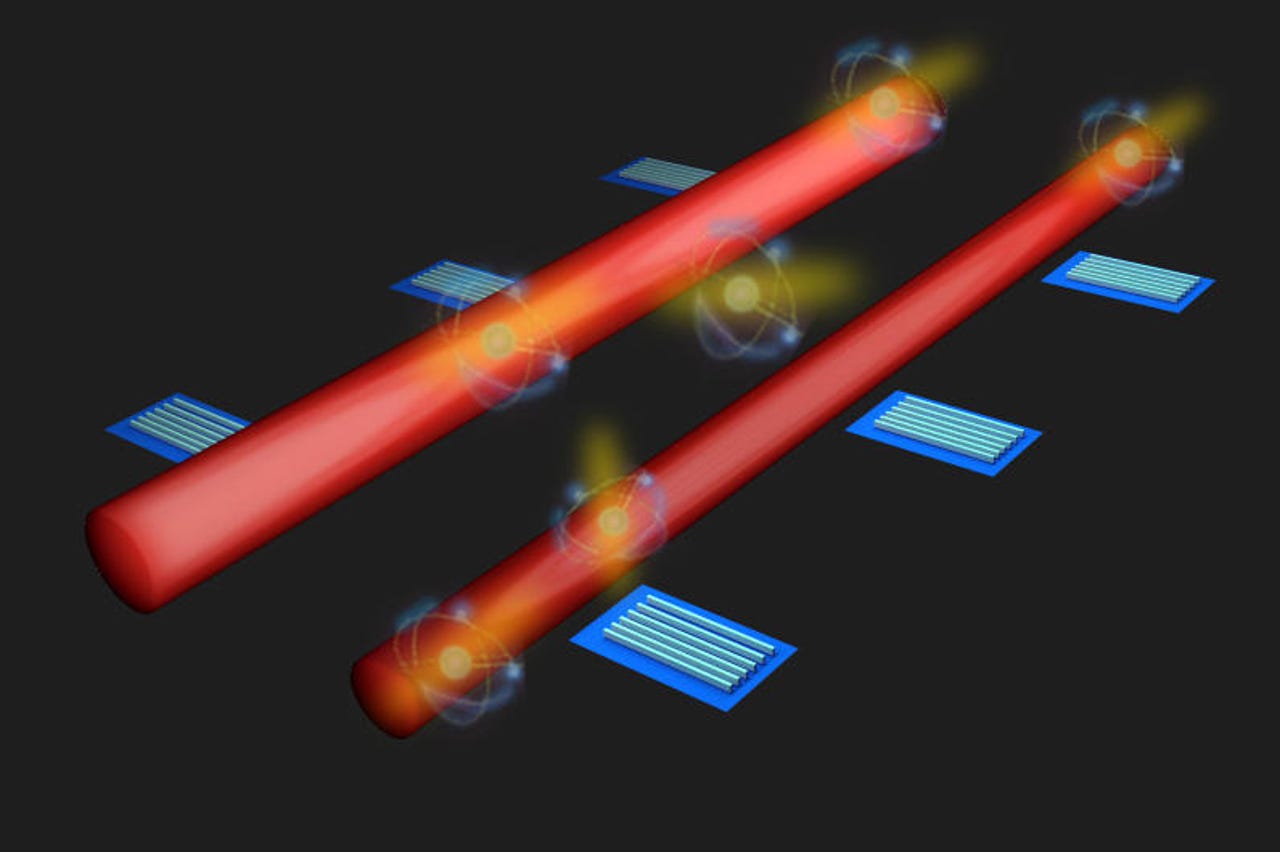ANU successfully measures light for quantum internet data transfer


An artist's impression of the research team's system of detectors along quantum circuits to monitor light particles.
The Australian National University (ANU) has announced a way to monitor and measure light particles along quantum circuits, with the approach touted as paving the way to a safe "data superhighway" in the quantum world.
The researchers led by ANU said that data being shared on the "future internet" will be stored in light particles, as it can store vast amounts of information. However, measuring light particles can interfere with the operation of the quantum circuit.
"The light particles move really fast so, for quality-control purposes, we've developed a way to monitor and measure them along quantum circuits, which are like superhighways for the light particles to travel along," said Associate Professor Sukhorukov, who led the research with a team of scientists at the Nonlinear Physics Centre of the ANU Research School of Physics and Engineering.
According to ANU, the team designed a system of detectors along the quantum circuits that can monitor light particles without losing the information stored by preserving the quantum state being transmitted.
"We guided light particles to two parallel paths, like two lanes on a highway: One lane has a faster speed limit than the other one, and light particles can freely change their lanes," PhD scholar at the Nonlinear Physics Centre Kai Wang said.
"Along both lanes there are several detectors to simultaneously check exactly how many light particles were passing these detectors at the same time."
The university explained that through repeated detections, the researchers gained an in-depth picture of these light particles as they entered and left the detection zones.
Wang said the researchers lost just a tiny fraction of the light particles through that process, without affecting the quantum state of the transmitted light particles.
"Our detection system can be built into a large, integrated network of quantum circuits, to help monitor light particles in real time," he added.
Read also: How the industry expects to secure information in a quantum world
The feasibility of the new approach was tested in experiments with custom-designed fabricated optical circuits by a research group at the University of Rostock in Germany.
The work follows ANU in September announcing the invention of a tiny camera lens it hopes will have application in quantum computing.
Made of silicon and 100 times thinner than a human hair, the university believes the invention could in the future enable a fast and reliable transfer of information from quantum computers to an optical fibre network.
A different team of ANU researchers in 2017 announced another quantum development, proving that an erbium-doped crystal can be used to form the building blocks of a quantum internet.
A team of the university's physicists had a year prior successfully completed an experiment to stop light, which is another critical step in developing future quantum computers.
It followed another group of ANU physicists inventing a tiny device using infrared that creates the highest-quality holographic images ever achieved.
Quantum computing is expected to revolutionise the world and Australia is well placed to be the first across the quantum finish line, with the University of New South Wales, University of Sydney, and the University of Technology Sydney also vying to win the quantum race.
READ MORE
Australia's ambitious plan to win the quantum race
Professor Michelle Simmons thinks Australia has what it takes to be the first to the finish line in the international quantum computing race.
What a quantum computer is, and why it needs to be more
It would be the harbinger of an entirely new medium of calculation, harnessing the inexplicable powers of subatomic particles to obliterate the barriers of time in solving incalculable problems. Your part in making it happen may simply be to convince yourself that black is white and up is down.
How quantum computing could create unbreakable encryption and save the future of cybersecurity (TechRepublic)
Photon-based quantum encryption could help companies better defend against cyberthreats, and it's one step closer to reality thanks to research from Duke University.